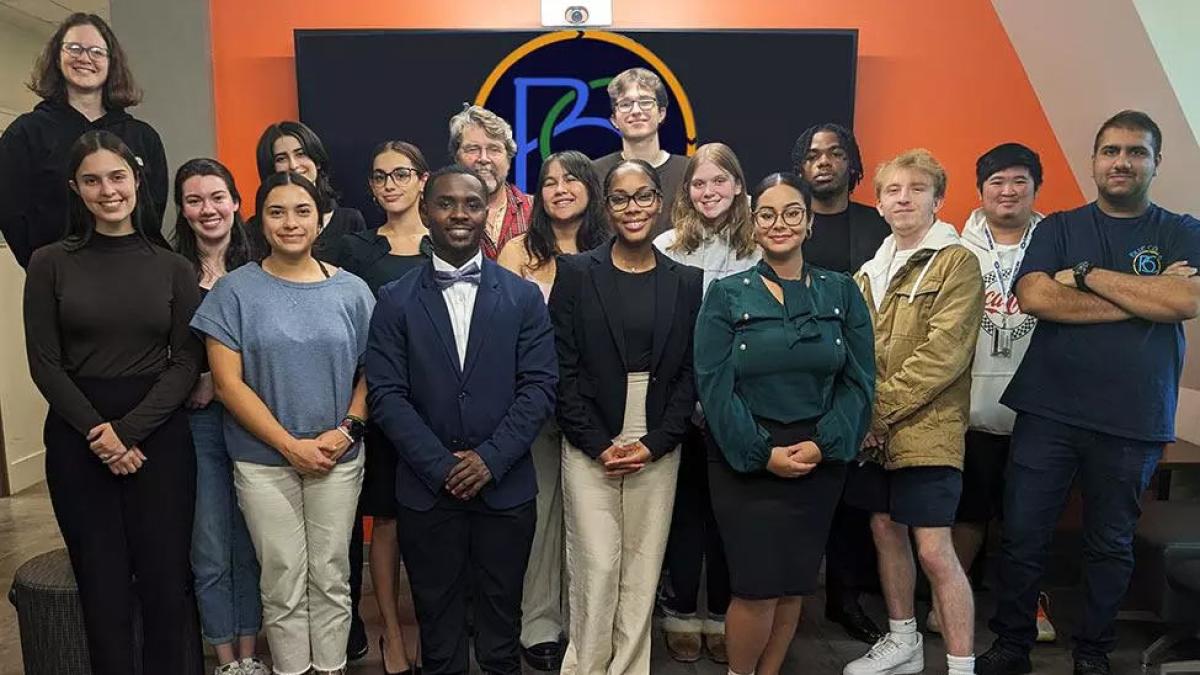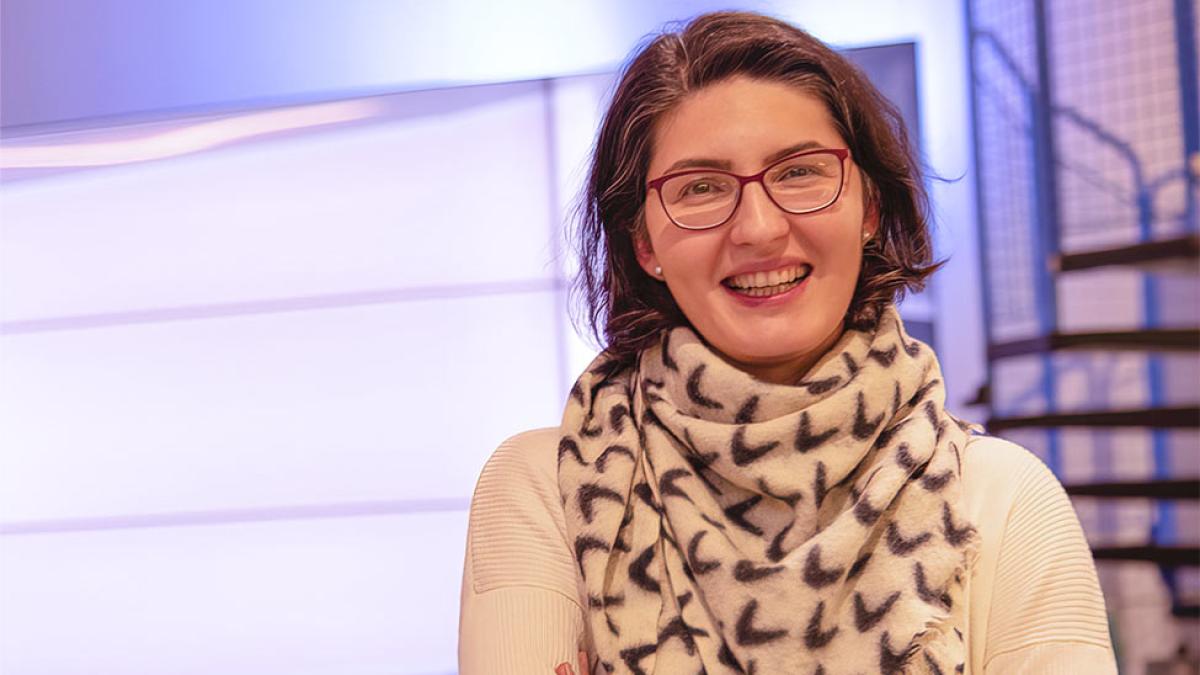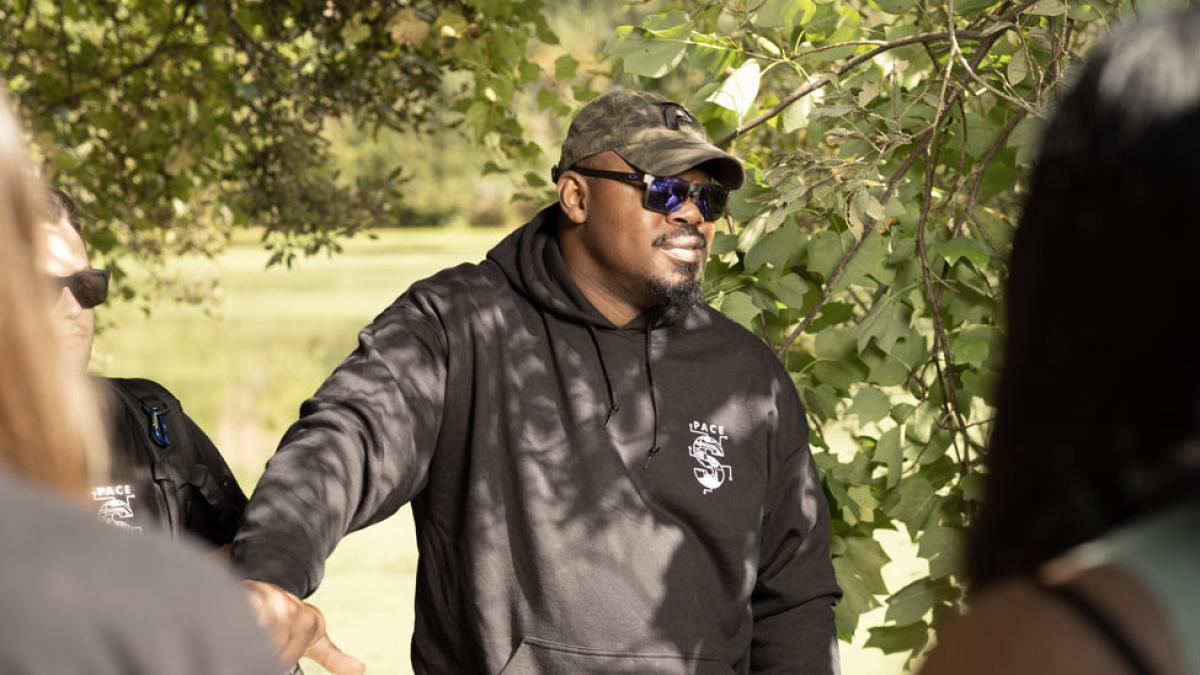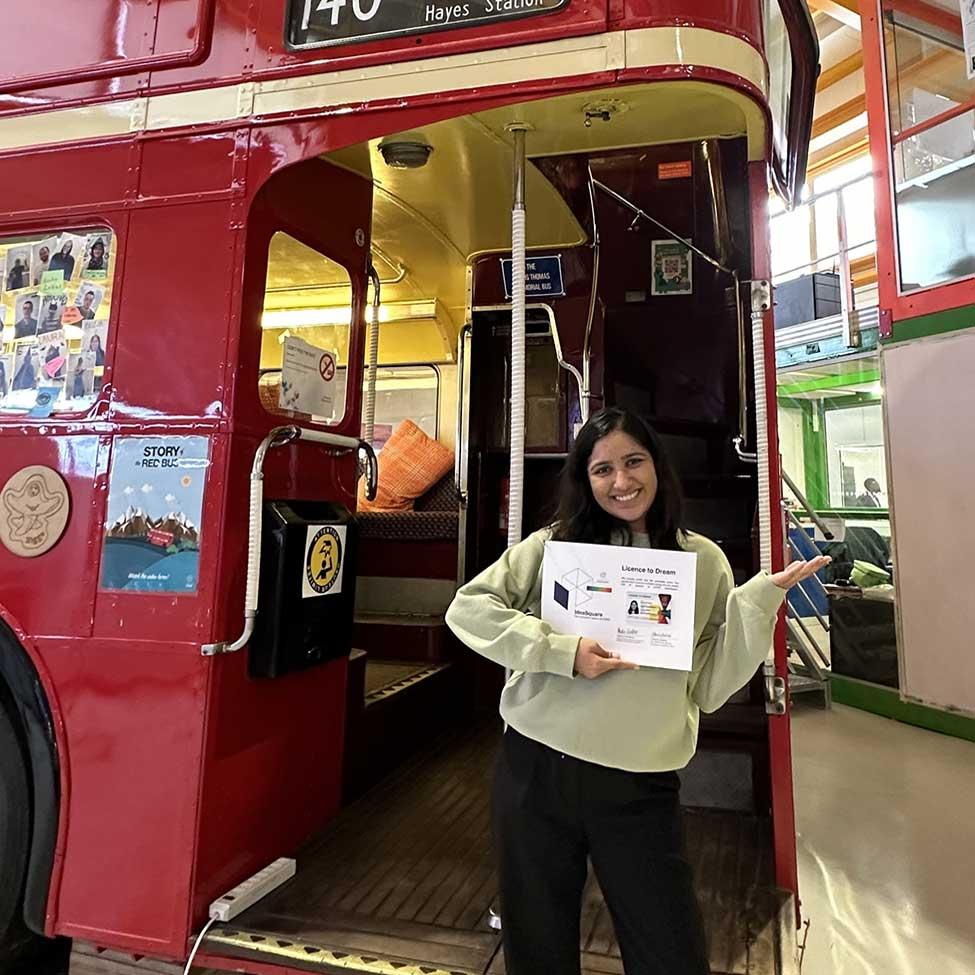
Designing Sustainable Solutions for a Better World
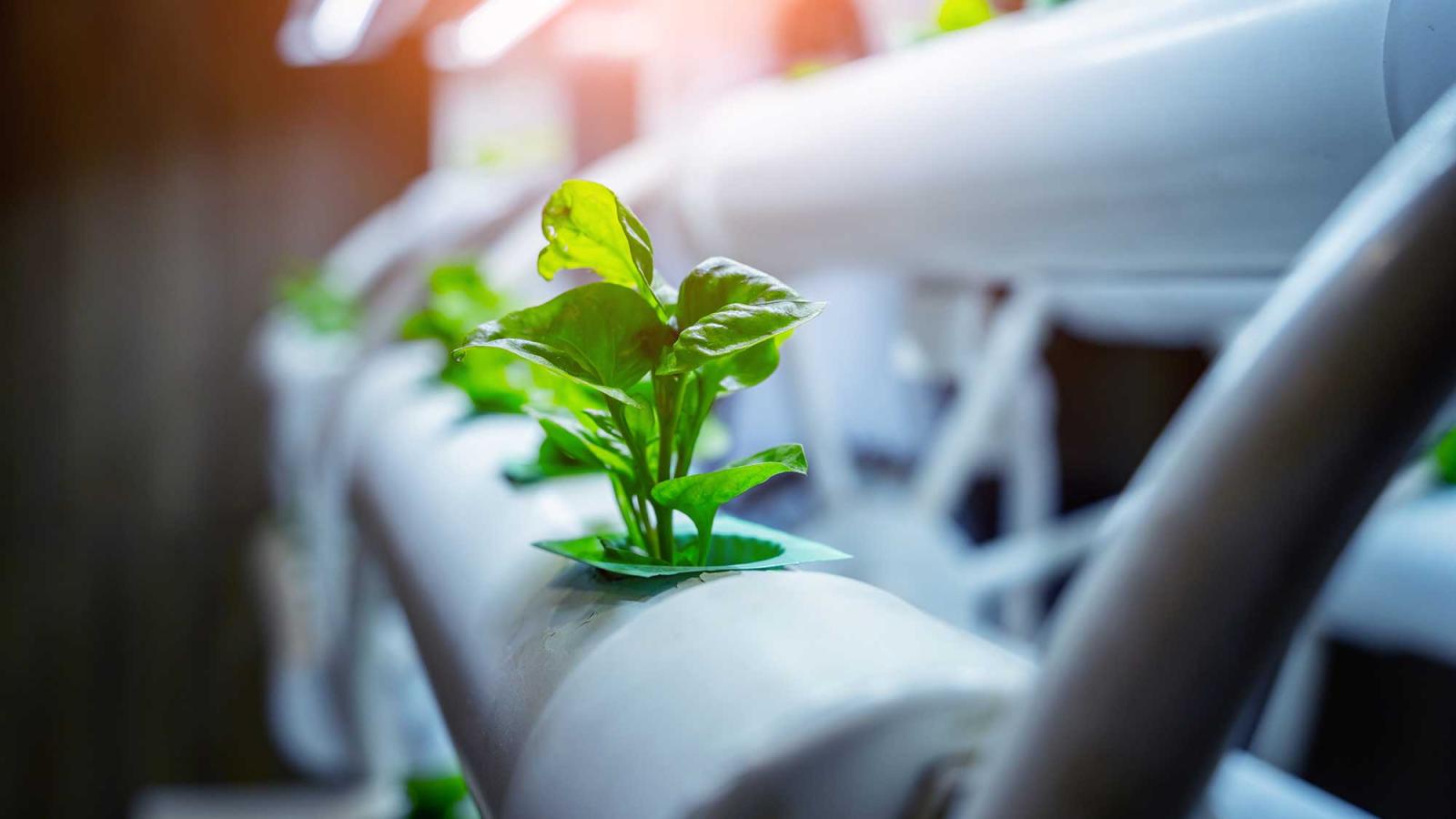
Today, about 50% of the world’s population lives near cities. Over the next few decades, this percentage is expected to increase. One important question that urban planners are beginning to ask is: How can we ensure future city residents have access to fresh produce, produced and delivered in a sustainable manner?
Enter, Seidenberg and Pace’s NYC Design Factory.

Saloni Pasad is a graduate student earning a master’s in Human Centered Design; a cutting-edge program offered by Seidenberg that delves deep into the sort of human-centered problem-solving that is often at the heart of our technology today. After taking a Research Methods course with Seidenberg Clinical Professor and NYC Design Factory Director Andreea Cotoranu in her first semester, she was introduced to the Design Factory; an innovation hub that is part of the Design Factory Global Network, through which student teams partner with major corporations and international organization to work together on solving industry or societal challenges.
After hearing some students speaking about their experience, Saloni was hooked.
“For one of her classes, Professor Cotoranu invited students from the Design Factory to speak about their experience with the international design challenge they were working on. I was awestruck, and was really looking forward to applying,” says Saloni.
In Fall 2023, Saloni was among eight students chosen for the Design Factory's Challenge Based Innovation A³ project, aiming to create innovative solutions using technologies from CERN (the European Organization for Nuclear Research) and ATTRACT (a project supported by the European Union). In this context students explore problems framed by the United Nations' Sustainable Development Goal 12, which emphasizes responsible consumption and production. The yearlong research and development project featured a two-week trip to ideaSquare CERN in Geneva, Switzerland in November.
While in Switzerland, Saloni and the NYC teams worked alongside teams from Design Factories in Melbourne, Australia, and Mannheim, Germany to focus on problem areas related to the UN goal, and had the opportunity to meet and learn from personalities from the world of design, science, and technology, including Robert Cailliau, one of the founders of the World Wide Web, who, as Saloni relayed, just so happened to have the first-ever prototype of the touch screen in his (super secure) briefcase.
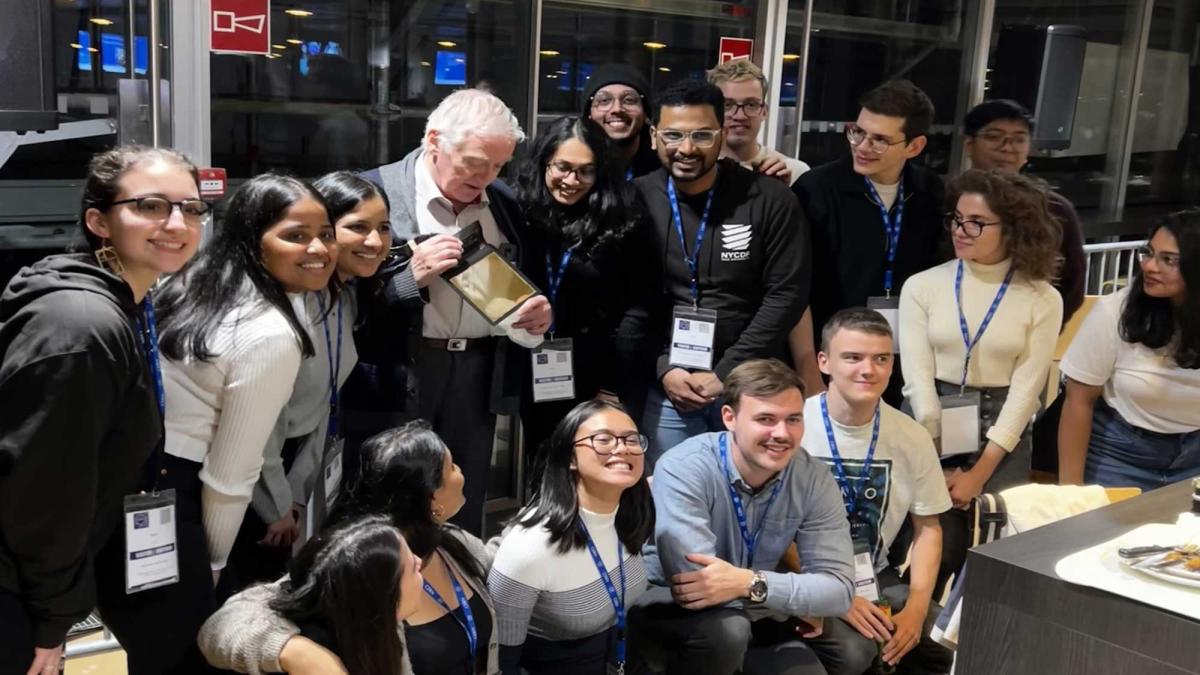
“I learned to look at a problem space from different angles. It might seem small, but I gained a lot from understanding exactly how scientists and designers think when they’re in the process of creating things.”
Through continued collaboration which culminated in a presentation at the end of the trip, the team narrowed down their problem space to one area; the question of how to sustainably supply cities of the future with healthy food.
"In cities like NYC, we're seeing a rise in the consumption of ultra-processed foods. To counter this trend and foster a healthier relationship between people and their food, we're looking to grow fresh produce right in the heart of our urban areas. By bringing vertical farming solutions into cities, we can make the most of our limited space while ensuring a steady supply of sustainable food for local communities. Additionally, we're exploring the concept of an Experience Center within our vertical farming initiative. This center would immerse visitors in sustainable agriculture through workshops, tastings, and hands-on demonstrations. Our goal is to deepen public understanding of where their food comes from and build a stronger connection with locally grown produce.”
Vertical farming, as opposed to traditional “horizontal” farming, is the practice of growing crops in vertically stacked layers; meaning that it can be done in many places other than a traditional plot of land, and even be incorporated into city designs. One of the major benefits of vertical farming is that growing can occur year-round, and is not susceptible to weather conditions in the same way typical farming is; and when implemented in strategic locations, this approach can significantly decrease the distance food travels before it arrives on grocery store shelves.
By bringing vertical farming solutions into cities, we can make the most of our limited space while ensuring a steady supply of sustainable food for local communities.
“We are exploring ways to integrate advanced technologies, such as those coming from CERN and ATTRACT, to cultivate high-quality, premium crops,” Saloni notes.
She is also excited to help initiate a larger shift in the relationship between communities and food. As an international student, Saloni has been able to experience this relationship from a unique perspective, and is excited to contribute to developing healthier behaviors around food consumption.
"Initially, as an international student, I found it surprising to see people consuming frozen food so often. Over time, I’ve gotten used to it. However, there's an opportunity to reconnect people with the rich flavors and aromas of real food."
Saloni and the team are now working on the problem space as part of a dedicated course, and have received a budget to develop a prototype. Their work will culminate in a presentation at the end of the year, and perhaps be employed to continue to push boundaries in redefining the ways in which fresh produce is grown and consumed in New York City neighborhoods. All in all, it’s been an opportunity that Saloni continues to be incredibly excited about.
"Coming to Pace, I honestly never imagined I'd have this experience. None of my friends at other colleges can believe the opportunity I've been given," she says. "I'm incredibly satisfied with the Human-Centered Design program; all my professors have been amazing, and the international experience has been fantastic."
About CBI A3
CBI A3 is a Design Factory Melbourne (DFM) initiative, developed for the Design Factory Global Network (DFGN), in conjunction with IdeaSquare, CERN. It builds on earlier Challenge Based Innovation (CBI) that focus on design innovation to propose solutions that connect CERN’s deep technology with societal needs. The United Nations Sustainable Development Goals provide the framework for the CBI A3program and guide user-centered research and design to focus on areas of high sustainable impact. This year CBI A3 brings together teams from Swinburne Design Factory Melbourne (AUS), New York City Design Factory (USA), and Inno.space—Design Factory Mannheim (DEU).
CBI A³ 2022–23 and 2023–24 editions include projects funded by ATTRACT Academy. ATTRACT has received funding from the European Union’s Horizon 2020 research and innovation programme under grant agreement No. 101004462
